
|   |

|   |
 e-mail: leelakaverivenkat@gmail.com Fond remembrances of selfless Guru of Jaipur Gharana Guru Kundanlal Gangani July 29, 2021 Conceived and organised by Jaipur Gharana Kathak dancer Prerana Shrimali, as a Kalaavart initiative, virtually observing the Punya Thithi (death anniversary) of Kathak guru Kundanlal Gangani, was one of its kind, rising above mundane thanksgiving to a departed guru. It was one of those rare events when not one person in the painstakingly selected panel of shishyas, hogged the mike by going beyond allotted time. Intelligently moderated by Prerana, the brief, but telling homages, evoked a real feel of a Guru who had left behind fond memories of not just his teaching expertise, but more, his rare human qualities. 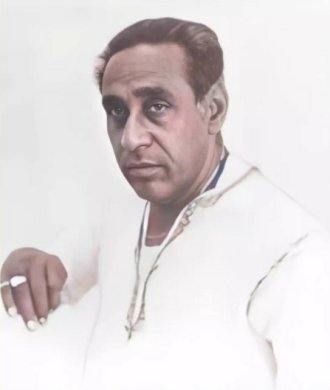 Guru Kundanlal Gangani Born in Sujangarh in the Churu district of Rajasthan in the year 1926, Kundanlal as a young boy started training in Kathak under his uncle, Narayan Prasad, a Jaipur gharana stalwart. Kundanlal Gangani's maiden performance was when a bare eight year old. He gave a solo performance at the Raigarh court when he was 11 years old, and his last performance was in 1960, after which he devoted himself entirely to teaching. While training Kathak aspirants in Bombay, among his many students were some high profile film stars. When Kathak Kendra in Delhi was on the lookout for a suitable Jaipur gharana teacher, it was Pandit Birju Maharaj who suggested the name of Kundanlal Gangani. The rest is history, for it was at Delhi while still heading the Jaipur gharana department of the Kathak Kendra, that Guru Kundanlal passed away in 1984. 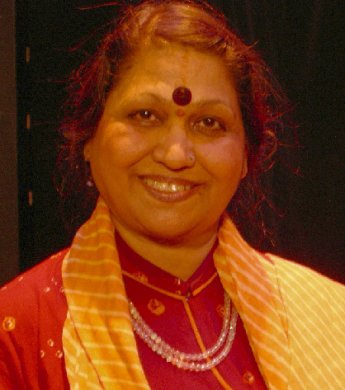 Urmila Nagar Urmila Nagar, one of the Guru's senior-most shishyas, had strong recollections of the Guru, who started his teaching career in Jodhpur. When he shifted to Jaipur, she remembers him having constant heartfelt exchanges in Rajasthani, with his closest friend Chiranji Lal, a musician. Urmila has fond memories of meeting the Guru's father, his mother and also his eldest son. Clad in dhoti with the inevitable topi and pagadi, she recollects seeing Guruji dancing in 1960. He was our Masterji and I addressed him as Sir. She said that coming as she was, from a family with no history of any music or dance, though she had learnt a little Kathak earlier, it was Masterji who really gave her the proper foundation. Very committed, unpretentious, and simple, he generally spoke in Rajasthani. Riyaz was his motto, and each movement would be repeated countless times by the student, to make it perfect. A chakkar was repeated 100 - 200 times! Urmila Nagar mentioned attending SNA's evening classes by Masterji in 1961 which lasted 3-4 hours in the mornings, with the evenings set apart for group practice, and the Secretary would also be present to witness the proceedings."Guruji was a fine tablist." She clearly recollected his playing the harmonium with his baye haath, reciting the parhant and for him the vocal learning was crucial to impart to each bol the right accenting and he would show how exactly the utterance should be translated in the ghungroo chalan. Guruji encouraged singing too and Chandrakauns, Keerawani were some of the frequent ragas used. Two brothers of Kundanlal's guru Narayan Prasad, Mohanlal and Chiranjilal, would play the tabla. Mohanlal was also a dancer and well known for his gats. She summed up saying that she had preserved what Guruji taught her by way of ghungroo chalan and she stressed the fact of how much importance he gave to acquiring the skills of tabla playing and singing for a Kathak dancer. 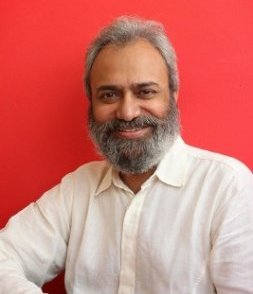 Ashish Khokar Ashish Khokar, dance historian, came under Guru Kundanlal as a student, thanks to his father Mohan Khokar, who was one of Kundanlal's closest friends, while his mother M.K. Saroja was the Guru's rakhi behn. Ashish recollected a photo shoot of Guru Kundanlal organised in Jhankar by his father who, as well known, was an avid photographer - and his celebrated dance photographs have become the proverbial other arm of his dance scholarship. With several senior students, Ashish called himself one of those standing right at the back of the classroom, learning very little partly because of his hand in too many classical dance pies, so to speak - including Odissi, and of course Bharatanatyam under his mother Saroja, one of the foremost dancers of the time and shishya of Muthukumara Pillai. Speaking with earnest conviction of the Guruji's qualities as a human being, Ashish stressed on the complete lack of any trace of guile or mischief in this simple and really good man, who, absorbed in his own work, totally kept away from the politics of dance. A person of few words, he recollected how, after seeing the film Pakeeza which had just been released, Guruji, after watching it in complete silence, when asked about his comments, after reaching home, replied "Achha Tha" (it was nice) and nothing more. A fine teacher, he would demonstrate a movement just once - and whatever a student was able to get out of it, would be a lifelong addition to his mastery over the dance. As for those who got nothing out of it, it was their permanent loss, for he would never repeat the movement. If the student performed a movement wrongly, he would open wide his big lotus eyes. His perfect ang with depth in simplicity, was taught with a great sense of commitment. Even Ram Gopal called him "a very good teacher who could make even a stick dance." He repeatedly mentioned his plan to take Guruji to London. Ashish ended with the smiling comment, that like most of Ram Gopal's effervescent promises, this too was never to see the light of day. Ashish Khokar also mentioned that since the Guru had had no formal education, he sometimes opted to help out, by writing the letters,which were dictated to him. The guru's students like Prerana Shrimali, have also mentioned their participation in this task for Guruji. And Prerana also mentioned, as an aside, to this writer, how the letters would flow with all the endearing gaalis (abusive words) also. The fact that Kundanlal Gangani could be so open in his dictation to a student without a thought of clothing his thoughts in a false garb of civility again shows the complete simplicity and openness of the man. Also, the fact that no student who helped in writing the dictated letters (and there were a few) has ever mentioned or thought in terms of making this a talking point at any time, shows the esteem in which Guruji is held, to this day.  Geetanjali Lal Geetanjali Lal was part of the Kathak Kendra Repertory, when Guru Kundanlal Gangani passed away and her closeness to the Guru came from the fact that she was the wife of Devilal. After her marriage in a Mandir, she was taken to Karolbagh first, to secure the blessings of Guru Kundanlal, whose children then were very little. She remembers clearly performing with Prerana and Kalyani Chakravarty, the composition Tribandhi, created by Kundanlal under the direction of Keshav Kothari. He would give one nritta refrain and ask the student to weave improvisations within it. He was a master at teaching leher ke ghumaav. For him the measurement of time or laya had to become part of one's automatic thinking. "If there is no laya in your mind, there will be nothing in the dance", he would say. This was the time when Kathak Kendra was brimming with new ideas, thanks to SNA Director Keshav Kothari, who being in charge of the Kendra, was passionate about the dance rising to contemporary needs of the proscenium, without in any way losing its classical strength. Geetanjali particularly recollects seeing Rajendra Gangani, the Guru's eldest son, then a young boy, dancing and she could see the Guru's signature in every tukra. "He showed all the promise of a fine future - this has been fulfilled." Geetanjali summed up that she had the advantage of this Guru's guidance, thanks to being Devilal's wife. Guru Kundanlal Gangani's prowess with the tabla was praised even by a fine percussionist like Shanta Prasad. Among the Gurus son's, who play the tabla, Fateh Singh Gangani has earned a high place. Talking about his training under the father, he started by stating his father's motto for a tablist playing for dance, "You must know dance to play dance on the instrument." Playing for dance is an art in itself and one should know the bols, the chalan and all details of how each sound is translated into movement in the dance, to play for the dancer. Even people like Kishan Maharaj would talk about my father playing the tabla. Once he tuned the tabla, it would resound in every Rajasthan gulley where he taught. I have still not heard any other dance guru play the percussion like him." Fateh Singh prays that he too can pass on at least some of this discipline to his students. 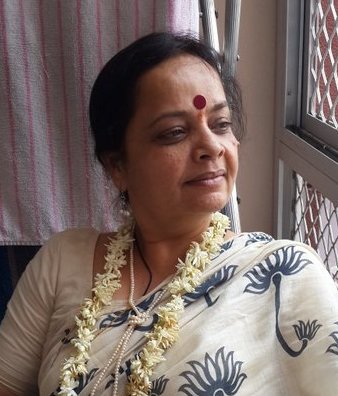 Prerana Shrimali Prerana Shrimali spoke of how the student had to be absolutely on time for the class at 7.30a.m, with ghungroos tied, and with the dupatta neatly pinned and not a hair out of place. She herself, after having learnt from Guruji in Jaipur, joined Kathak Kendra Delhi, as a 19 year old scholarship student, insisting that she be registered as Guru Kundanlal's student. When Keshav Kothari with the Guru sitting on the panel smiled at this insistence, Prerana later on found out from Keshav Kothari, that the person on the panel was none other than Pandit Birju Maharaj - whom she did not recognise, having lived a sheltered life in Jaipur! Prerana spoke of the Guruji's stress on rakhaav and Shudh Ang (the way the feet were planted on the floor and immaculate dance profile). She has often told this writer, how the Guru would tie the students hands while the tatkar was being performed. "He would tell us to keep talking amongst ourselves while the feet marked tatkar in immaculate precision to the taal as the lehra played on. Even today I can conduct a conversation, while my feet mark ta thai thai tat. The idea was that the lehra and laya had to become an automatic part of the dancer, requiring no special thinking. This is how precise footwork becomes a foundation on which other dance ideas are built. Prerana also spoke of Keshav Kothari's insistence on new compositions being created. Kundanlal followed the idea though his conviction was in solo dance, as the true Kathak expression. With Keshav Kothari's persuasion, he created some fine group compositions, though his heart was in the solo form. Jayant Kastuar, more involved with policy making and management as Secretary of the SNA for years, had been witness to the Guru's work in the Kathak Kendra, even while direct interactions with him were limited. Recognising him as a fine teacher, he complimented his training of solo dancers in the classical paddhati, with complete attention to sthanak and ang. Kundanlal Gangani's contribution to the history of the dance, was that while moving from Jodhpur to Jaipur to Bombay to Delhi, he was able to create soloists without compromising on tradition in any way, while making the dance adjust to advancing time and changing sensibilities. By the time he passed away in 1984, he had formulated a new vision of Jaipur gharana Kathak in the new context for the solo dancer. Like Jayant Kastuar's own guru late Durga Lal, Kundanlal Gangani too was a firm believer in the solo form as the true representation of Kathak. 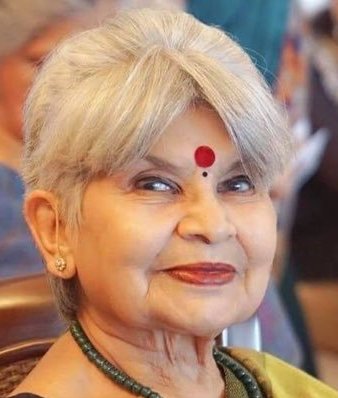 Manjari Sinha Critic Manjari Sinha defined the Guru as the Vata Vriksha, which provided shelter for Kathak of Jaipur gharana vintage. A blend of laya and sur, not to speak of the excellence of percussion, Guru Kundanlal's professionalism covered a composite mix. She brought out his practice of having a doha as a precursor to every thumri, the poetry invariably blending with the mood of the lyrical composition to follow. This along with the laggi in the concluding part of the thumri, an aspect she mentioned as being so strongly brought out in the dance of his shishya Prerana Shrimali, were features of the Guruji's style. And in the finale the strong competition between dancer and percussionist as equals, combined the element of shared joy and togetherness. Manjari recollected the manner in which, years back, veteran Urmila Nagar with her expertise in footwork and laya, walked up to the accompanying tablist Zakir Hussain to pat him and express her deep admiration at his prowess. The enunciation of bols in parhant and above all, how this accenting and softening poetry, translated into the fullest expression while playing the tabla, was what Kundanlal Gangani's training represented. Tabla playing called for sensitivity and not pounding on the instrument (as sometimes done today) to bring out the vocabulary of sounds creating its own music. And sangit for the dance was also an aspect the Guru concentrated on. Shashi Sankhla, who attended classes under Kundanlal Gangani at the Sangeet Kalakendra spoke of him as a moody person, but also said that his image, imprinted in her heart was her constant shadow. 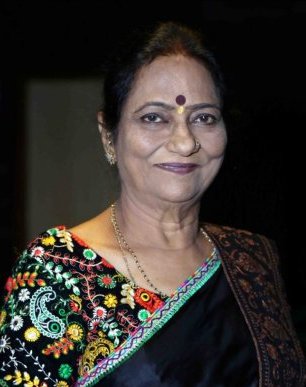 Shobha Koser Shobha Koser who runs the Chandigarh dance institution Pracheen Kala Kendra, which was started by her husband Madan Lal Koser in 1956, became a student of Kundanlal Gangani, when she was already a mother of two children. And even while she learnt under many Gurus, her first teacher being her own mother, she considers the finish or sampoornatha which her dance acquired, as coming from her training under Kundanlal Gangani. "Taal, laya, todas, tukras, paran were not new to me. But aesthetics of the dance was known only after learning under Guruji. Whenever he came, the dance and practice would go on at all hours till late at night. The feet with ankle bells tied, would remain so throughout the day, and I would even do my cooking without removing them." She confessed to pretending she did not know something, for that was the only way of making Guru Kundanlal demonstrate - and with this ruse she was able to witness quite a bit of his dance. There was no distinction between home and class, when he was there. The evening ended with a worthy suggestion from Ashish Khokar, that with so many enthusiasts expressing their thoughts on this fine Guru, it was high time a book was brought out. This would be a fine way of leaving behind a permanent record for all those who were not aware of this fine Guru and even finer human being.  Writing on the dance scene for the last forty years, Leela Venkataraman's incisive comments on performances of all dance forms, participation in dance discussions both in India and abroad, and as a regular contributor to Hindu Friday Review, journals like Sruti and Nartanam, makes her voice respected for its balanced critiquing. She is the author of several books like Indian Classical dance: Tradition in Transition, Classical Dance in India and Indian Classical dance: The Renaissance and Beyond. Post your comments Pl provide your name and email id along with your comment. All appropriate comments posted with name and email id in the blog will also be featured in the site. |